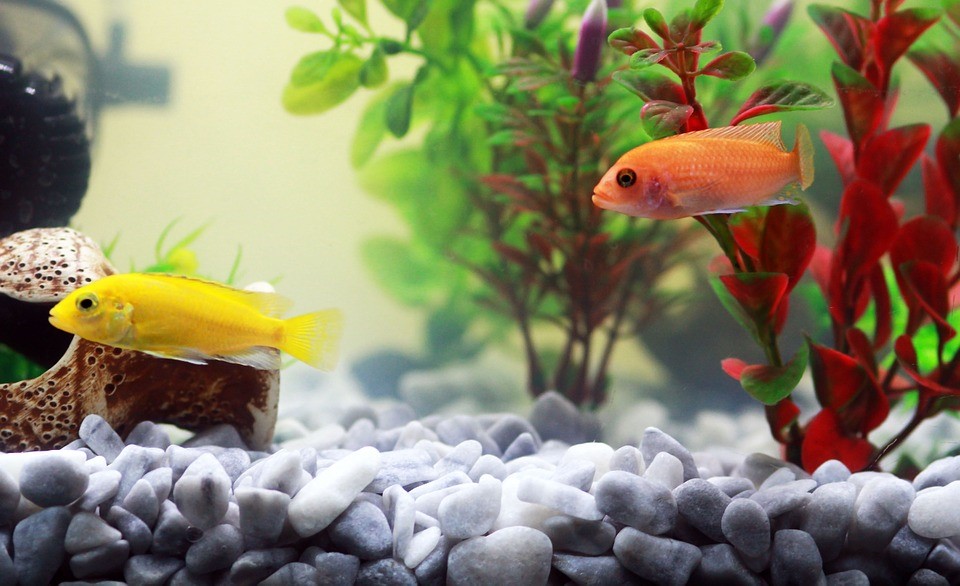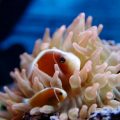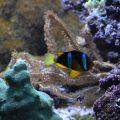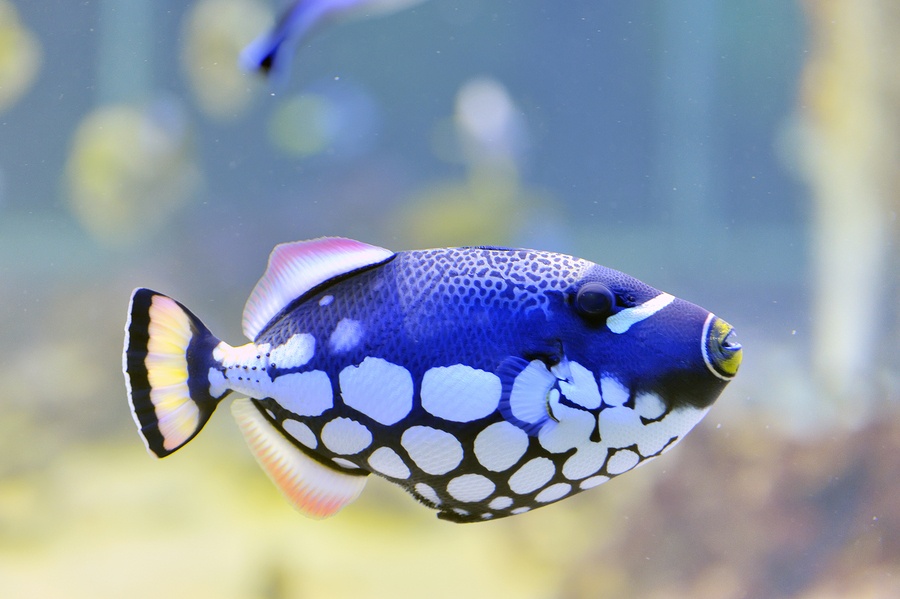
Nothing is more beautiful than a big saltwater fish tank. It is not only spectacular to look at; it can also be quite relaxing. Pacing it in your home or in your office will add beauty to the overall environment. Then again, you should understand that it takes a lot of work to set up and maintain a saltwater fish tank—from selecting a tank to preparing everything to selecting your fish and caring for them. Hawkfish, goby, dartfish, dwarf angel fish, dottyback, damselfish and chromis are some of the fishes that can thrive in a saltwater fish tank.
Why Get a Saltwater Fish Tank
You can get a freshwater fish tank or a reptile tank, so why should you get one to house saltwater fish? The first and most important reason is this: saltwater fishes are extremely beautiful. Of course, there are freshwater fish that are attractive, but if you are looking for a wider variety of eye-catching and rare species of fish to decorate your home or care for as a pet, then opt for fish that thrive in saltwater environments. Imagine having a collection of unique fish species that you can enjoy right in your own home. Wouldn’t that be a delight?
Again, before you venture into setting up a saltwater fish tank, you need to understand that it is not easy to set-up or maintain. You may have to spend at least two months to prepare a good fish tank. Additionally, you will have to take measures to balance the salt content you place in the water whilst maintaining healthy plant life.
Why does it take long to prepare the tank? Once you have chosen the right aquarium and set in in place, you will have to meticulously filter and balance the water so that it can maintain life. If it has less salt, your pets and plants won’t thrive inside the saltwater aquarium. If it has too much, similar consequences can occur. Keep in mind that saltwater fishes are quite pricey. So if your saltwater fish tank is not balanced and maintained, you could lose the money you invested in these costly fish species.
Setting Up a Saltwater Fish Tank
So you want your own saltwater aquarium, even though it can be quite difficult to put up and maintain? Great! Here are ten simple yet detailed instructions that you should follow in setting up your own saltwater fish tank:
Choose a good location.
The first step naturally is to decide where you want to pace your fish tank. After you pick the best spot, then you can choose the aquarium and the stand you need to set it up. Why is the location of the fish tank important? Once you set up a fish tank, it will not be easy to move it to another place. You also need to remember that your saltwater aquarium should not be placed in direct sunlight. Natural sunlight can add to the growth of algae amounts in your tank, so it is best to not expose your fish tank to it. When algae grow in your saltwater aquarium, it can easily multiply out of control and affect your fish. Choose a place that is well-ventilated and where there is cooler temperature.
Make sure that the location of your aquarium has access to electrical outlets as you need to plug filters and lighting systems. Also, the additional space in the location is a factor as apart from the tank, you need to place a filter or heater.
Choosing a fish tank.
There is no right or wrong choice when it comes to the aquarium—it is a matter of personal choice. Anything that will suit your needs will work. For instance, if you want to care for a large fish or a good number of small ones, you should naturally choose a bigger saltwater fish aquarium. Always make sure that the tank can accommodate the size of the fish when it grows.
A lot of people think that when they are setting up their first saltwater fish tank, they should get start small and get a small one. They think that when they get the hang of it or when the fish grows in length then can get a new aquarium and transfer the fish there. It may seem logical but it is actually a mistake. You need to take into consideration the length of time it takes to set up a salt water tank and for the plant life to thrive in it, as well as how long the fish can adapt to their surroundings. By transferring them, you can affect their health. It is better to get a bigger size fish tank. With the time and effort it will take for you to set-up, you won’t want to switch to a bigger fish tank.
Think about it, when you set-up a bigger fish tank initially, and there are some mistakes, you can easily correct them before the problem becomes big. If your fish lives in a smaller tank and there is a problem that you have to fix, it could be too late to save them.
Choosing an aquarium stand.
The stand should be big enough and sturdy enough to hold your aquarium. In many stores, they sell fish tanks and stands in pairs, so that you can be sure that they are compatible and the stand can support the fish tank well.
Crafting a clean environment.
You need to clean your aquarium first. With a clean cloth, you should use warm, fresh water and NOT salt water, to clean the tank. Moreover, NEVER use any kind of chemical cleaners as they can leach into the water in your tank and kill your fish. Don’t think that you don’t have to clean your tank. Remember, it has been sitting on in storage or on display before you bought it. There is dirt and residues that are there that can go in the water when you fill it. These can also harm your fish.
Put gravel or substrates.
After buying substrates or gravel, make sure you rinse them out before you add them to your tank. Put the substrates in a sieve and wash it with running water so that the dust will be removed. The gravel or substrates will be placed in the bottom of the tank. You can put at least an inch of bed. How do you know how much gravel or substrates to buy to create a 1-inch bed? Basically, you need a pound of grave for every gallon of your fish tank.
Add in the water and salt.
While it can be tricky, keep in mind that you won’t put the fish in immediately, so you don’t need to be anxious about it. To make it easy for you, you can use pre-mixed saltwater. This has the right balance of sea salt in your water. But if you don’t like to spend on expensive pre-mixed saltwater, you can easily make your own.
- Get sea salt mix from the local fish store. Do NOT use table salt, iodized salt or any kitchen salt for your tank! Follow the instructions in the package on how to get the perfect mix of salt and water. Also, do not use tap water as it is hard water. It contains trace minerals that are not good for saltwater fish. It can even have medications, additives and chlorine. If you will use water from your tap, ask the local fish store for a treatment solution.
- Fill the tank with water up to one-third of the tank. Test the gravity of the water and when it is okay, completely fill your tank. Make sure there is room in the tank for heating, lighting and filtration equipment.
- Set up the filtration system and run it for 24 hours. Similarly, run the heater overnight so that the water will reach the right temperature. After 24 hours, check the salt levels again before you proceed with the next step.
Decorate the tank.
Decorating the saltwater fish tank is called aquascaping. This is the most fun, most creative part of the set-up process. Add vegetation and cured live rocks. They are not only a source of food but also a filter. Don’t use an uncured live rock as they can kill your fish.
- Start the nitrogen cycle.
Cycling is the next step. It means that you will allow the biological filtration to happen so that the natural environment will be established. The live plants and the live rocks will aid the cycling process.
- It is time to add a source of ammonia to your tank. You can put in a pair of sturdy starter fish that will produce sufficient levels of ammonia in the water. But if you are concerned for the fish that may suffer unbalanced water levels, you can opt to use maturation fluids sold in local fish stores. When ammonia levels are good, there is less chance for bacteria to multiply. A nitrogen cycle will take a minimum of two weeks.
Choosing a healthy fish.
This is the most exciting part. While your saltwater fish enclosure is cycling, you can head on over to the fish store to select the fish you like. Yes, they may be expensive, but remember they are caught from the wild and it is a difficult process. Make sure to find a good saltwater fish dealer. Don’t buy a fish that you don’t know—do your research first. Additionally, check out if the fish is swimming normally or if there is a dead fish in the tank. While these tips are common, some people can overlook this fact in their excitement.
Acclimate the fish to the fish tank.
To avoid getting your fish going into shock or dying, you need to get them used to their new home. It’s not easy. First, you need to open the bag where they came and take out half of the water. Then place the bag inside the fish tank and secure it to the side of the tank safely. Make sure the waters do not mix. After 10 minutes, add a quarter cup of water from your tank into the bag. You can then another 10 minutes, add another quarter cup, testing the pH and temperature all the time. And then, get a net and transfer your fish from the bag into the aquarium. Never put the water in the bag inside your saltwater fish tank, throw it out!





 Author and long-time animal lover. Sharing knowledge on pet care through experience and the written word.
Author and long-time animal lover. Sharing knowledge on pet care through experience and the written word.